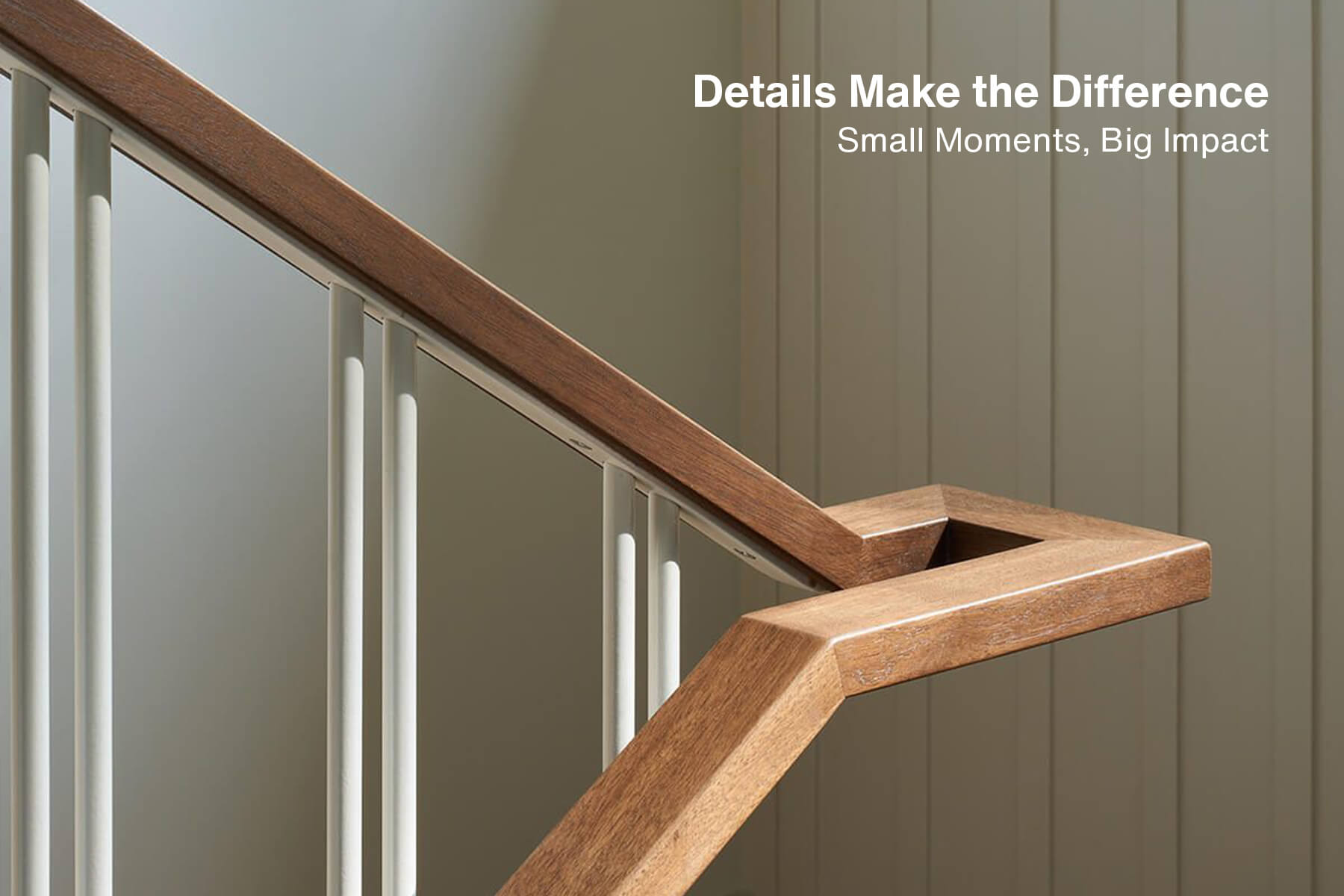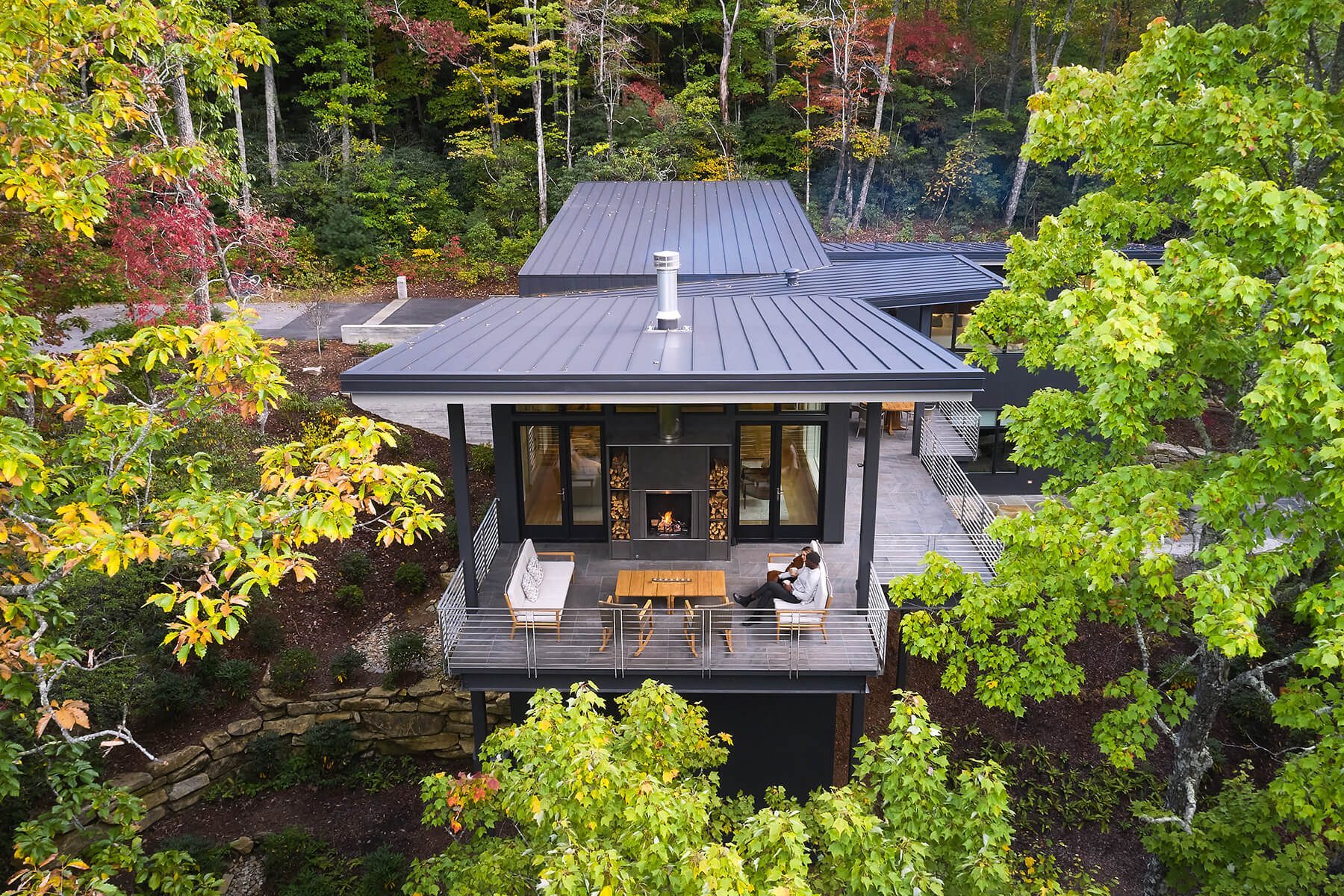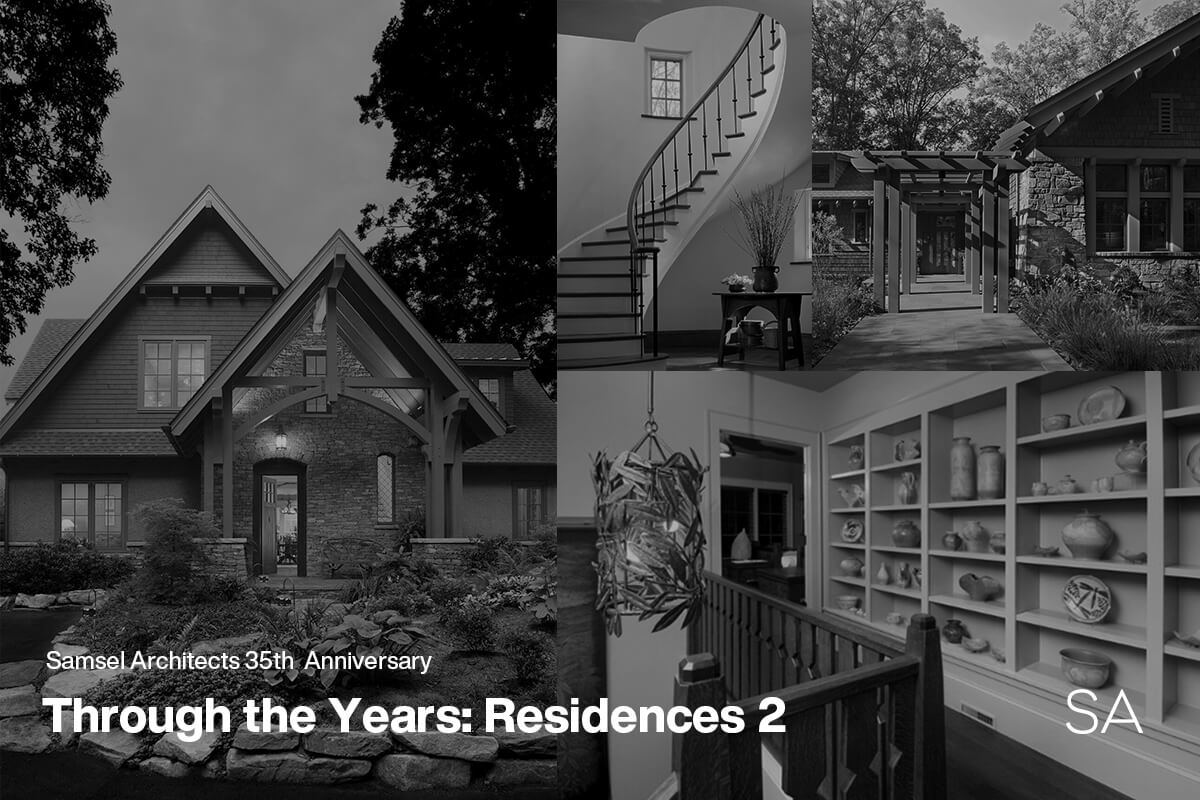News + Inspiration

Mountain Modern Architecture Inspired by the Past
How Meaningful Roots Connect You to Place
Written by: Melissa Reardon

Building a home is about putting down roots. A home that’s thoughtfully built in harmony with the local environment and culture leads to deeper roots, by helping us better connect to the history, people, and natural world where we live. In architectural design lingo, we call this vernacular architecture.
Not unlike vernacular language, which points to a distinct regional dialect, vernacular architecture refers to a type of local or regional construction that uses traditional materials and resources from that area. It’s a design method that’s in response to a region’s natural elements (typography, vegetation, and climate) as opposed to influences brought from elsewhere. It’s about building in a way that works with the natural surroundings rather than against them. For this reason, vernacular architecture is efficient and reduces impact on the environment while also being unique to different places in the world, sort of how the concept of terroir is to wine.
In Asheville and the greater Western North Carolina region where our firm, Samsel Architects, designs custom modern mountain homes, we take great inspiration from the region’s vernacular architecture and translate it into modern living.
We take great inspiration from the region’s vernacular architecture and translate it into modern living.
What is WNC Vernacular Architecture?
If you’ve walked around downtown Asheville or taken a stroll through any of the historic neighborhoods, the architecture is as varied as the influx of visitors to this scenic area of Appalachia. Everything from Art Deco to Queen Anne and Elizabethan manor houses to Craftsman styles exist here. Gorgeous and full of ornate character for sure, but those architectural styles were all brought here as a result of fashion and trends of the various times, rather than a style that’s rooted in place.
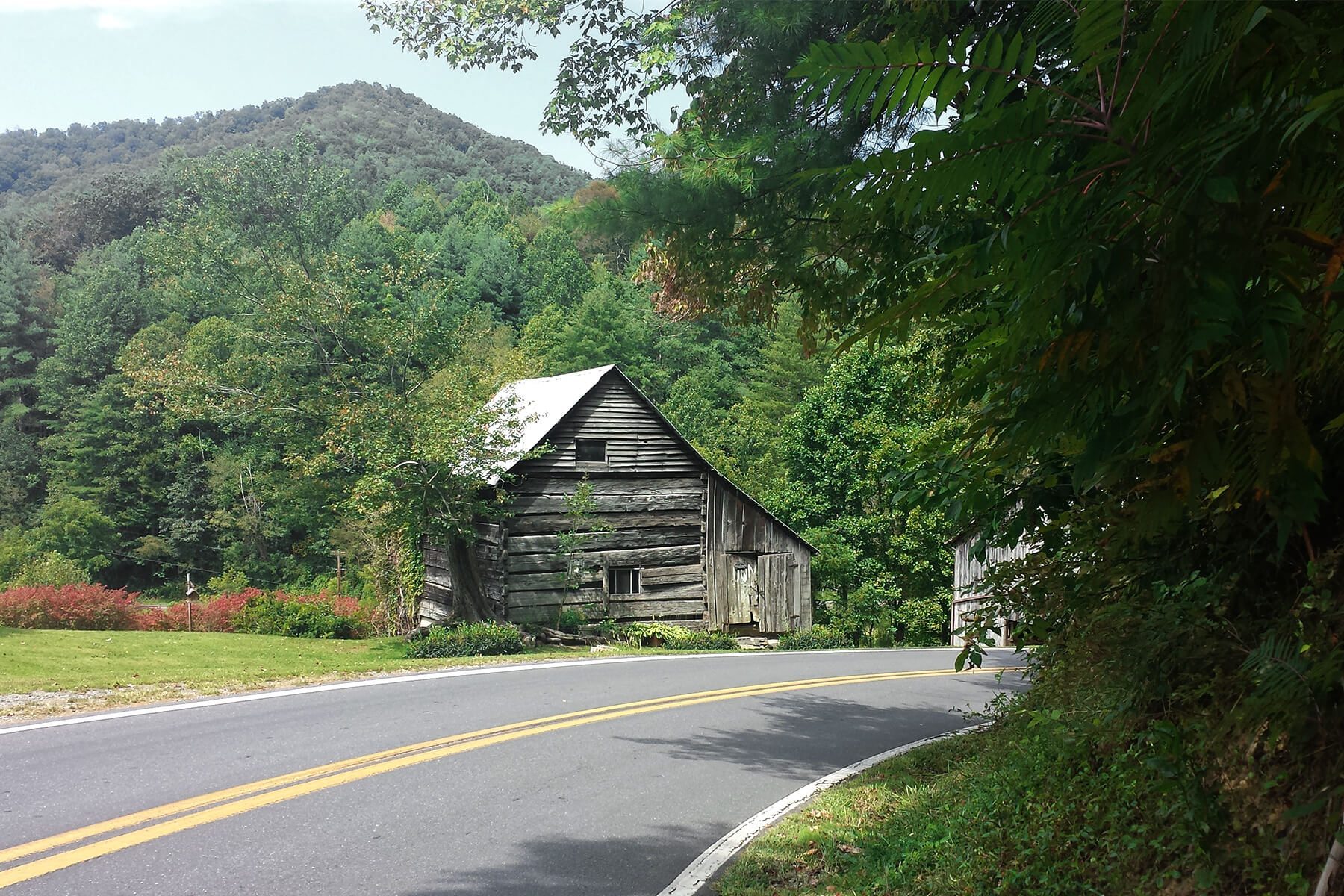
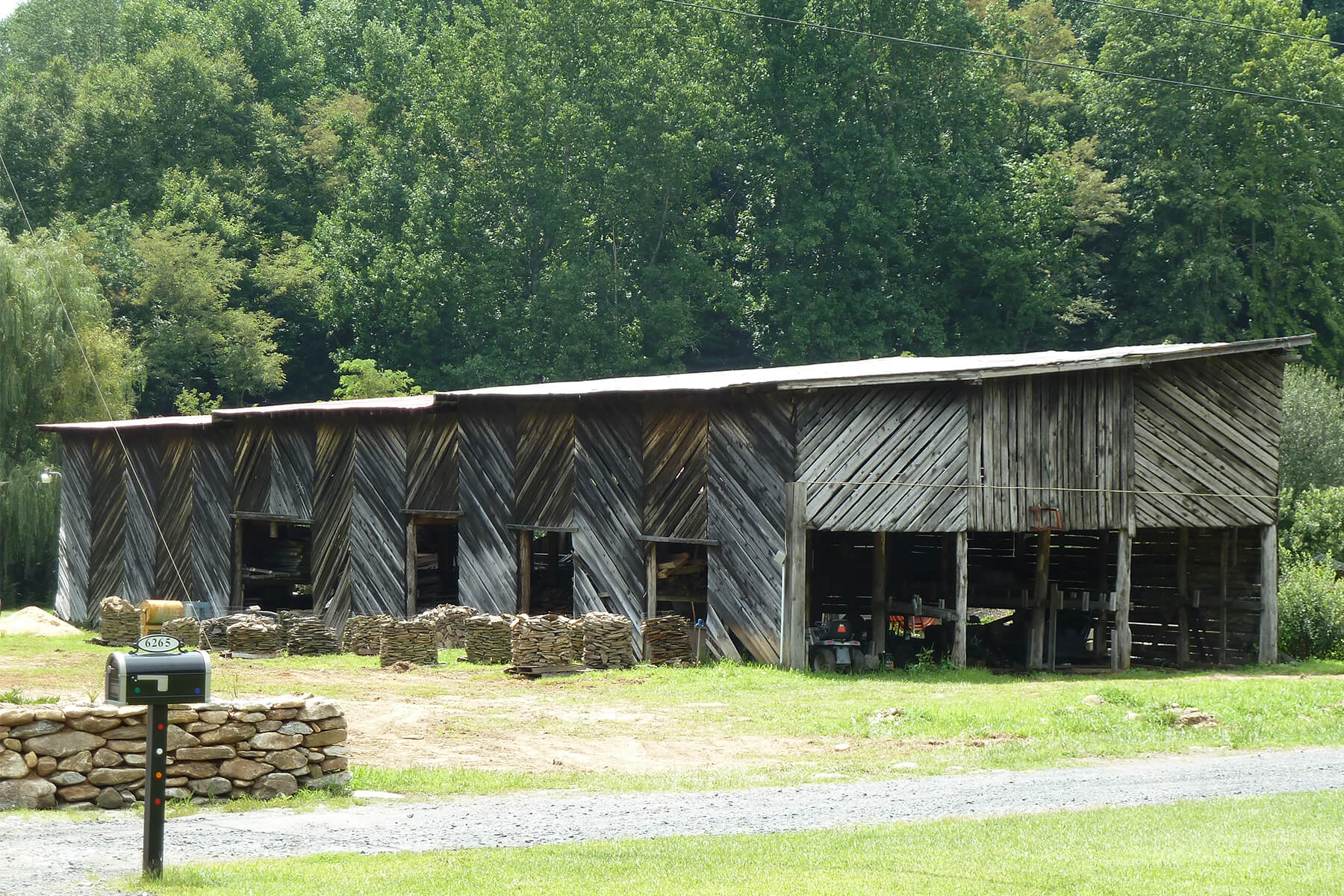
The architectural styles that arose in this rugged and once very isolated area of Southern Appalachia are versions of log cabins, farmhouses, and barns. These buildings used various ideas and construction techniques from the Native American population that inhabited the region for centuries as well as from various European cultures. The functionality of the structures, the materials of which they were built, and even the way they were positioned within the land were all influenced by the typography, climate, and also economic and natural resources—or lack thereof.
Poor farmers made up the lion’s share of residents in the region through the 1800s and turn of the 20th century. They didn’t have a lot of money to build and rebuild, and the quick run to Lowe’s was not a convenience of the time. What’s more, the mountain terrain and climate here can be harsh—steep slopes, bracing winds, rain and flash flooding, and snow.
But generations learned how to live and survive here. They knew to build near water and access for transportation, but to not place their home in the floodplain, where their row crops would be better served. Homesites near lower elevation trees and forests provided windbreak, as a home near the mountaintop was much too risky and exposed to the elements. Even understanding the differences in microclimates between the northern versus southern side of a mountain, or the directional differences between the summer and winter sun was knowledge well served. Indeed, the early settlers were adhering to passive solar design (using the sun’s energy to help heat and cool) before it even had a name.
It’s these old methods of learning a place so intimately, respecting and working with the natural elements rather than against them, and utilizing the lay of the land and native resources where possible that inspire our architectural work.

A Modern Take on Western North Carolina’s Historic Structures
At Samsel Architects, we focus a lot of energy on building custom homes in Asheville and Western North Carolina. We start by examining the site – walk the property to study the wind, sun, water, and native flora. Of course, every client has specific wishes as well, so between their requests, any budget constraints, and the natural surroundings, we develop a design that suits the client and the environment. Each project is entirely individual and unique. Here are just a few of our projects inspired by WNC’s vernacular architecture.

Our Three Bridge home on Lake James has three ravines on the site, which are important for natural drainage of the land. Rather than disrupt the land, we worked with it, and drew inspiration from the region’s historic wooden bridges for the design. We touched the land gently, so that the flow of water and native plants would thrive. And the stone foundation and timber elements are classic hallmarks of the region’s old farmhouses.
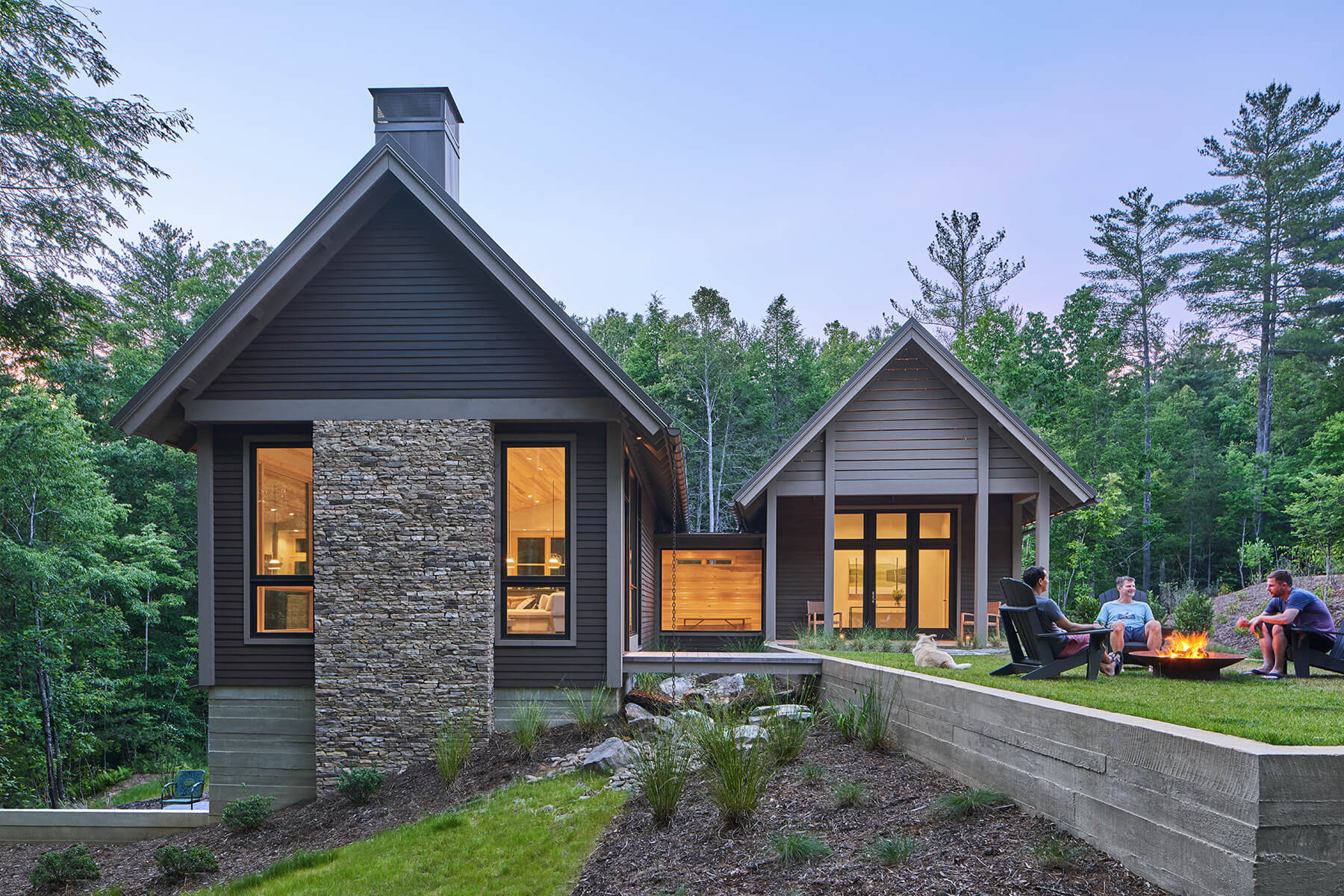
Also on Lake James, the Camp Campos project takes inspiration from the old farmhouses that utilized a dogtrot design, where two living areas are separated by a breezeway. These homes were typically one-story log structures with chimneys on the far ends. For this house, the communal and private wings are separated by the dogtrot, which we enclosed from air but not sunlight. Reflecting the surrounding forest, wood and stone are the primary elements, with stained cedar siding and stone on the exterior and light Eastern white pine throughout the interior. The metal roof is a material that was preferred by the region’s early settlers for its durability and resistance to forest fires. And as a homage to the area’s early corn cribs, where the boards are spaced to allow for air circulation, we used slatted boards across the gables.
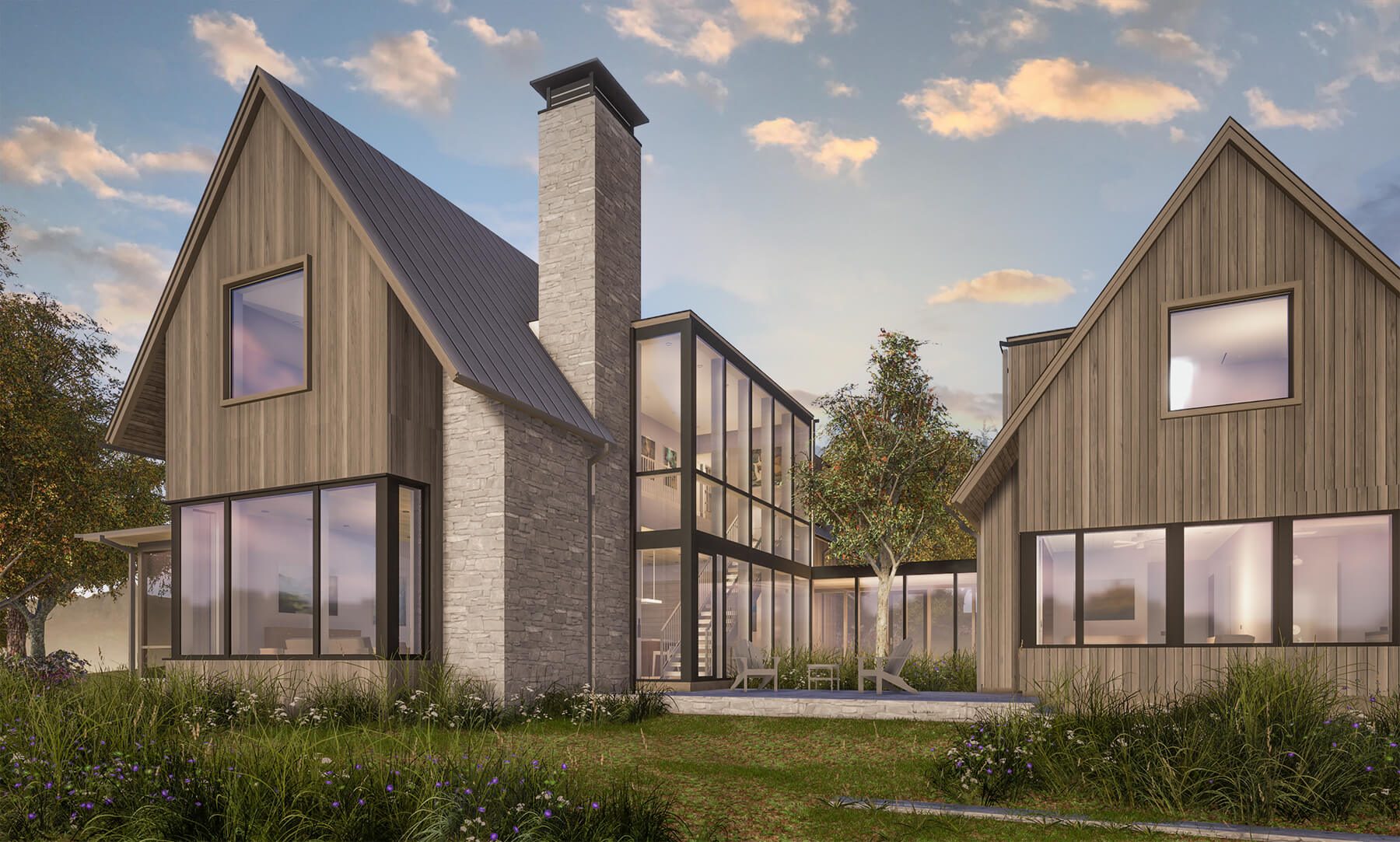
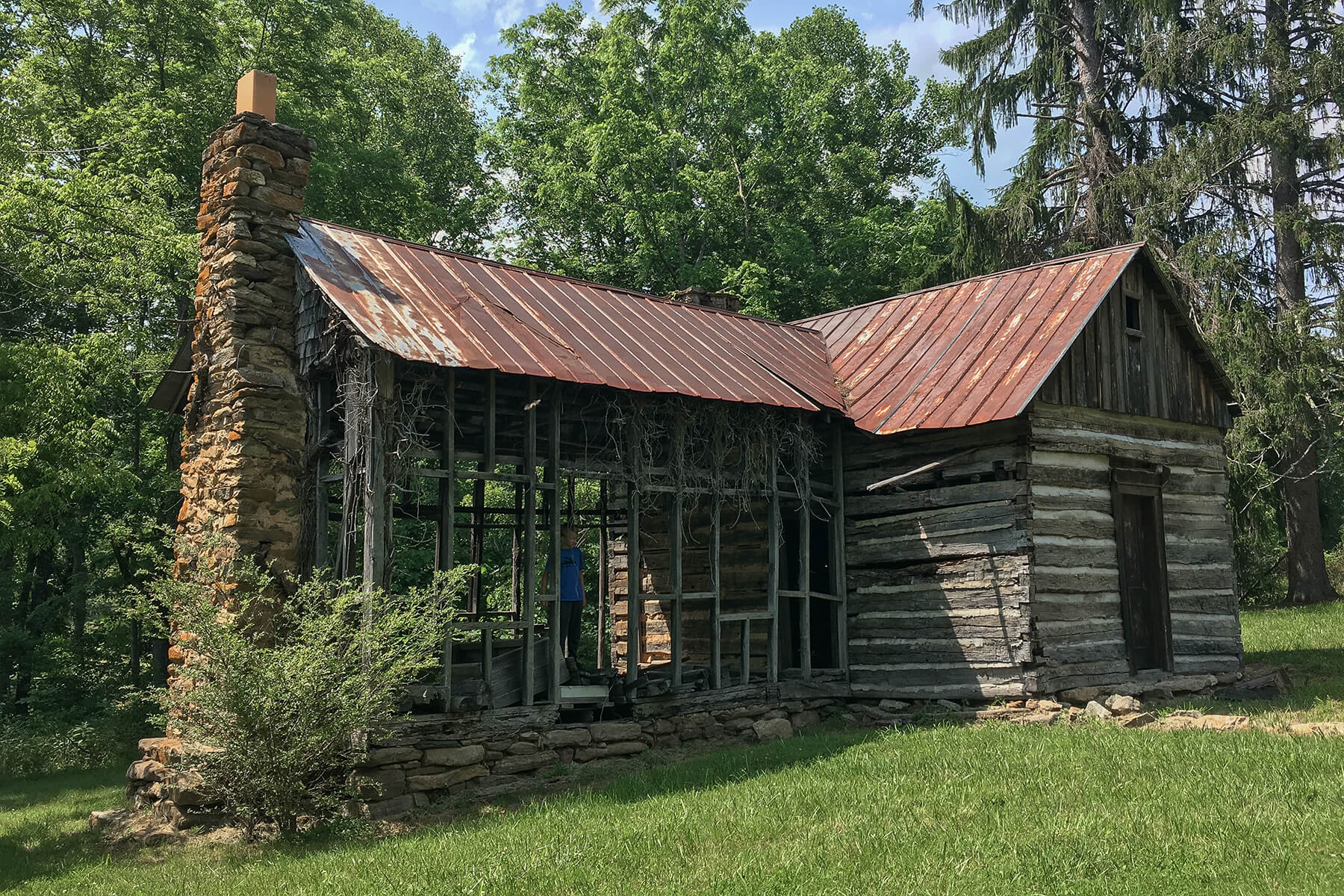
For the Jones Cove Farmhouse, we also incorporated a glassed-in dogtrot layout. This particular homesite came with existing structures on it including this old log cabin which is one of the oldest standing structures in Buncombe County. We drew a good bit of inspiration from it when drafting the plans for the modern dwelling. We drew parallels between the stone foundation and hearth as well as the metal roof. The steep gables are also historically inspired elements that aid in shedding rain and snowmelt. We also loved the old cabin’s vertical board and batten near the roofline and translated that look into the new home. In the early days, a vertical orientation of exterior siding would’ve been desired for its ability to more efficiently wick rain, by allowing runoff to follow the natural wood grain.
Here’s another project in Yancey County where existing structures on the property inspired our design. For the new residence, we created a concept using regional materials and clean lines, including a significant roof overhang at the porch. The overhang is key for shading during summer heat, and a white exterior also helps reflect heat.
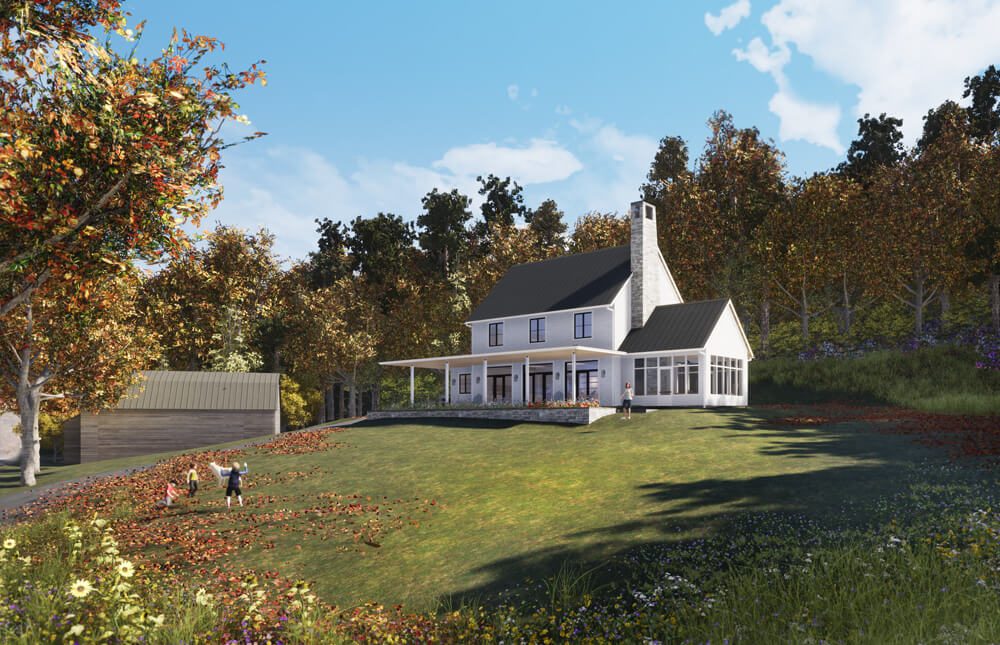
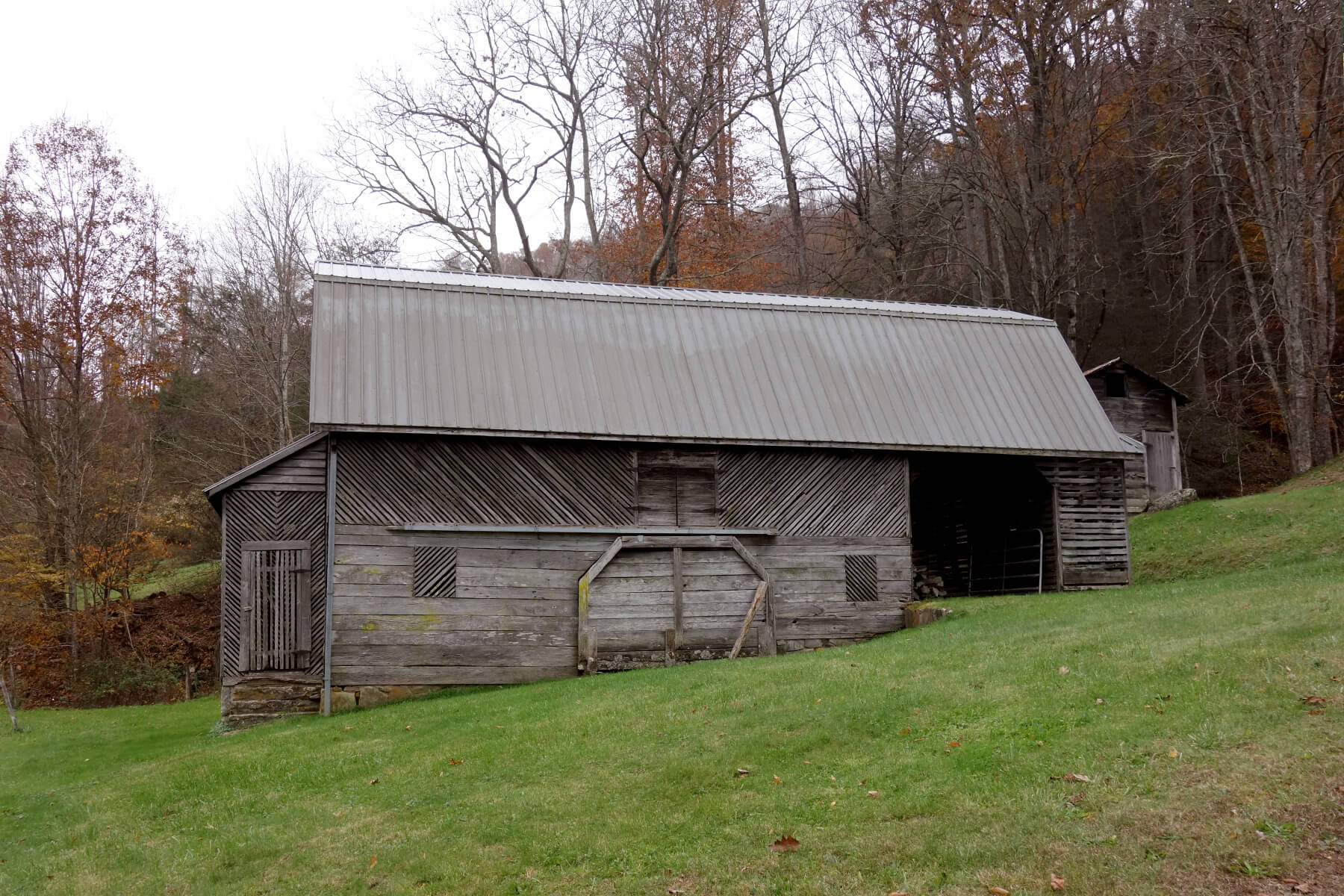
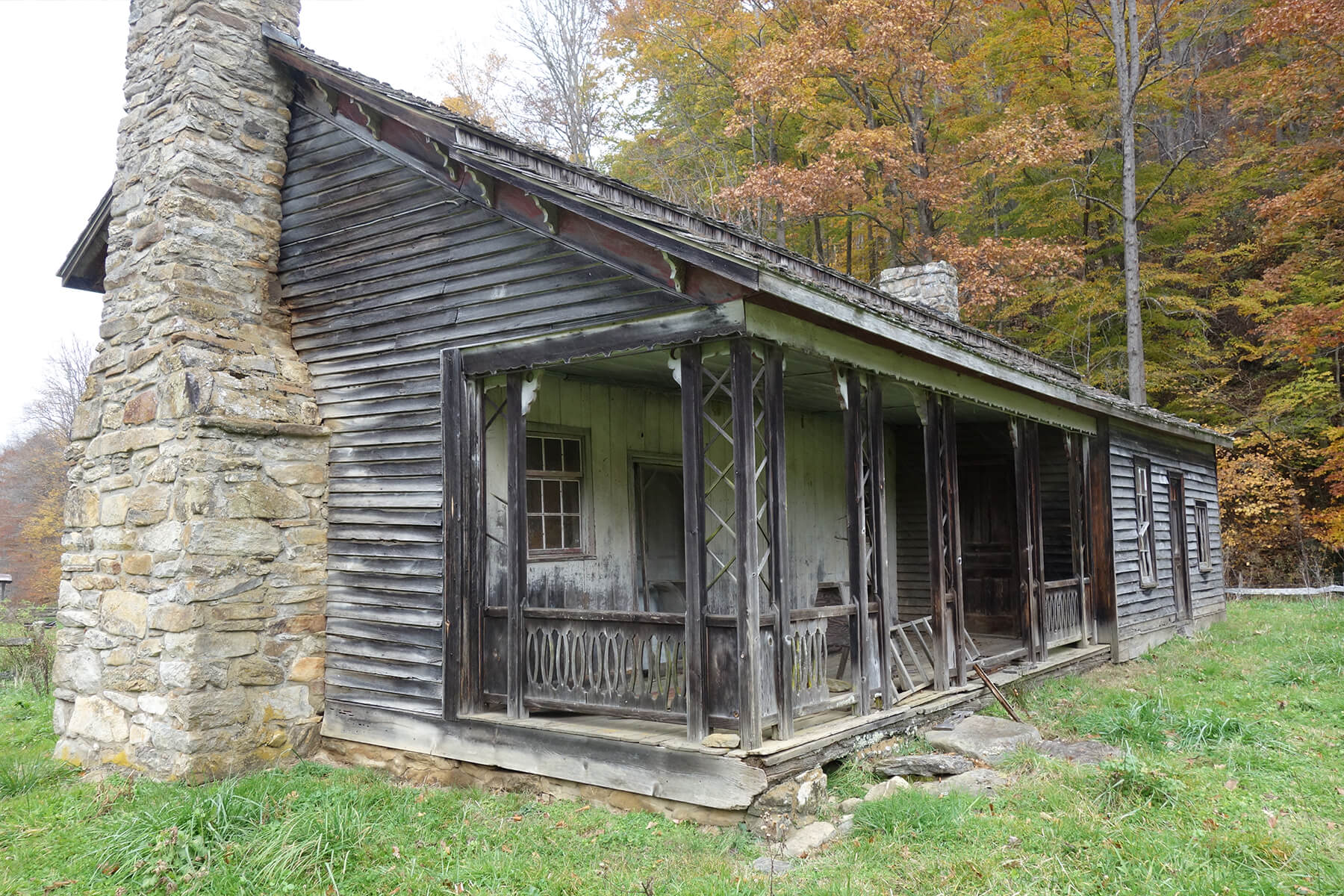
At the heart of historic vernacular architecture is simplicity of form. It is smart design that is practical and intentional. Taking inspiration from our area’s historic precedents, we design modern interpretations that help our clients put down meaningful roots.



